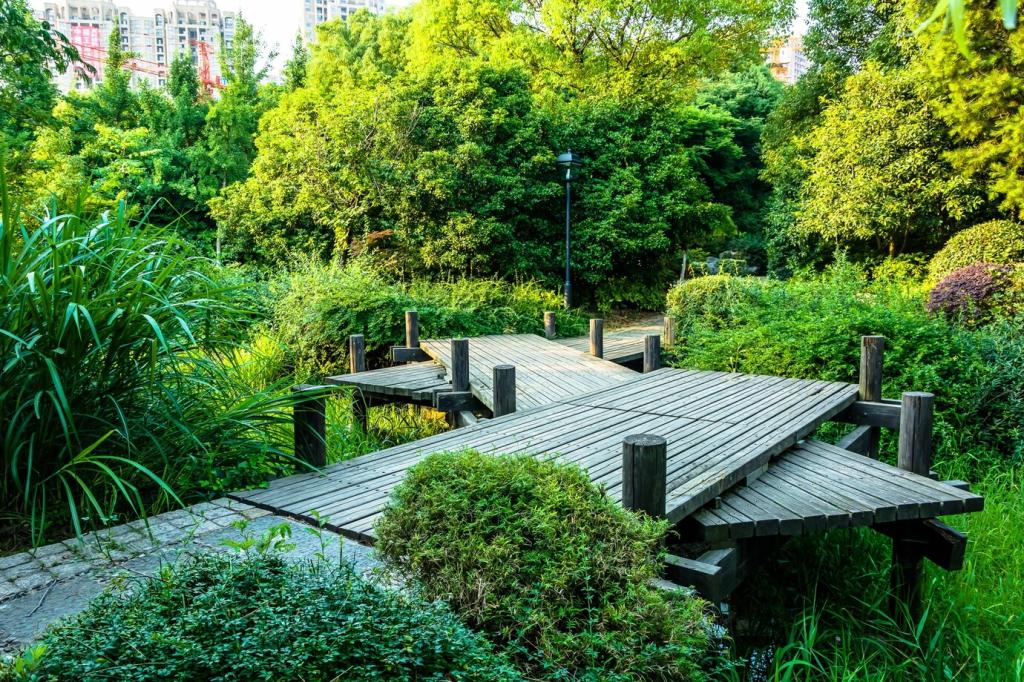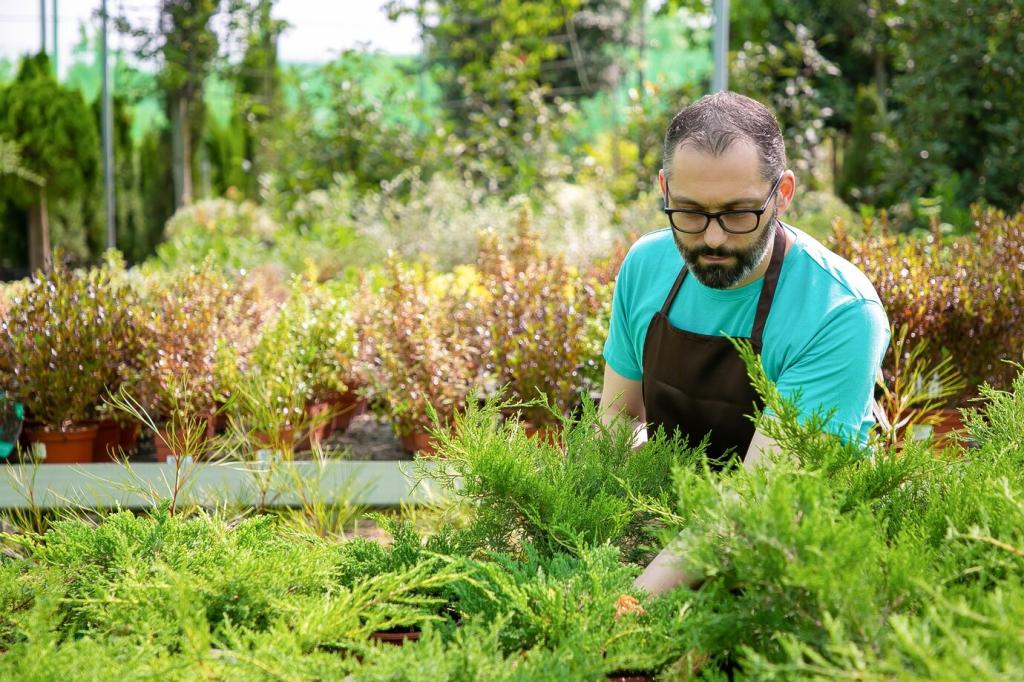Reclaimed Urbanite: Character-Rich Hardscapes from Old Concrete
Start by asking local contractors or demolition crews about clean, unreinforced slabs you can reclaim. Avoid painted surfaces that could contain lead, and check for embedded rebar that might complicate cuts. Choose consistent thicknesses to simplify stacking, and document the source to maintain transparency for future maintenance.
Reclaimed Urbanite: Character-Rich Hardscapes from Old Concrete
Arrange pieces like oversized pavers, leaving permeable gaps filled with angular gravel for drainage and root oxygen. Use running bonds for paths and mosaic patterns for patios, guiding stormwater into planted swales. Invite pollinator-friendly plants to self-seed in crevices, softening edges while increasing biodiversity and seasonal interest.
Reclaimed Urbanite: Character-Rich Hardscapes from Old Concrete
Sweep joint material back into gaps each spring, and reset pieces that settle after heavy rains. A compacted, well-draining base reduces frost heave and wobble. If heat buildup worries you, choose lighter-toned urbanite, add shade with vines, and share your results with our community for feedback and inspiration.







